The Meiningen Pastel - Bach Through The Eyes Of His Relatives Pages at The Face Of Bach
Page 1 - Did the Father Paint It, or Is It the Work of his Son?
The Face Of Bach
This remarkable photograph is not a computer generated composite; the original of the Weydenhammer Portrait Fragment, all that
remains of the portrait of Johann Sebastian Bach that belonged to his pupil Johann Christian Kittel, is resting gently on the surface
of the original of the 1748 Elias Gottlob Haussmann Portrait of Johann Sebastian Bach.
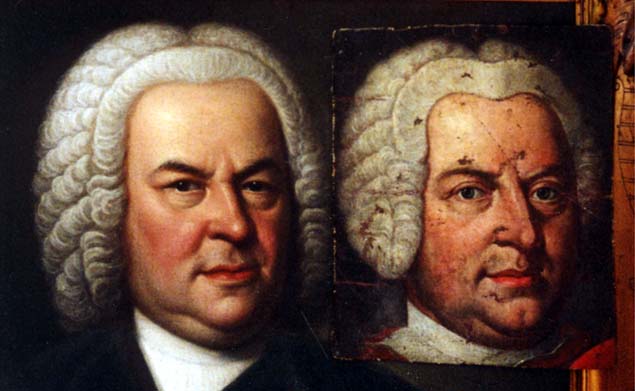
1748 Elias Gottlob Haussmann Portrait, Courtesy of William H. Scheide, Princeton, New Jersey
Weydenhammer Portrait Fragment, ca. 1733, Artist Unknown, Courtesy of the Weydenhammer Descendants
Photograph by Teri Noel Towe
©Teri Noel Towe, 2001, All Rights Reserved
The Meiningen Pastel
Bach Through The Eyes of His Relatives
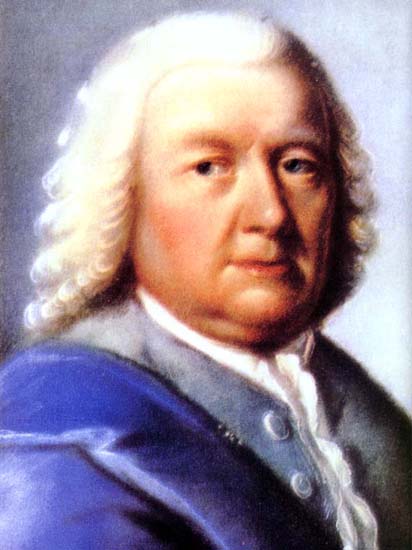
Part One
Did the Father Paint It, or Is It the Work of his Son?
The best description of the Meiningen Pastel, one I could not hope to better, is Karl Geiringer's in his The Bach Family - Seven
Generations of Creative Genius, a book that is twenty years old in its most recent edition, but still a particularly valuable resource.
Geiringer was the first to disclose to the general public the existence of this likeness of Sebastian Bach:
"Like other pastels by Gottlieb Friedrich Bach, this portrait is not signed. However, its small size, the predominant use
of the painter's favourite color, a brilliant cobalt blue, and in particular the realistic conception of the picture, are
distinctive characteristics of Friedrich's art. The beautiful courtier's redingote Sebastian is wearing contrasts with the
sober garments depicted in the Haussmann portraits...If Gottlieb Friedrich had no other claims to fame, this highly
expressive likeness of the Thomas Cantor which greatly enriches our extremely meager stock of authentic Bach
pictures would be sufficient to establish the painter among the significant portraitists of the time." (Geiringer, The
Bach Family - Seven Generations of Creative Genius, London, 1954, 4th Impression, 1980, p. 449)

The original of this image has descended through the Meiningen branch of the Bach family, with whom Sebastian Bach and his
family maintained close ties, and, at least in 1978, the pastel was still in the possession of a direct descendant of Johann Ludwig
Bach (1677-1731). The picture is neither signed nor dated, but on the basis of long standing family tradition, it is, to the satisfaction
his descendants and many others, at least, the handiwork of Gottlob (Gottlieb) Friedrich Bach (1714-1785), Johann Ludwig's
younger son.
On the basis of that family tradition, Karl Bernhard Paul Bach (1878-1968), the great-great grandson of Johann Ludwig and the
great-grandson of Gottlieb Friedrich, who owned this portrait for many years,
"declared it to be the work of his great-grandfather, court organist and cabinet painter Gottlieb Friedrich Bach
(1714-1785), son of the Meiningen Court Kapellmeister Johann Ludwig Bach [cross-reference omitted], and
presumably painted when Gottlieb Friedrich visited Leipzig, where his brother Samuel Anton (1713-1781) went to study
in May, 1732 and was a frequent guest in Johann Sebastian's house [cross references omitted]. It may have been left
there as a present and bequeathed to C. P. E. Bach, in which case it can be identified as the pastel the latter is known
to have owned..." (BDL, p. 404)
Arthur Mendel reports another, related hypothesis:
"Gottlieb Friedrich's son, Johann Philipp (1752-1846), likewise 'an excellent portrait painter', visited and portrayed
Philipp Emanuel, his godfather, in 1773. It was suggested that Philipp Emanuel exchanged Gottlieb Friedrich's pastel of
Johann Sebastian , which is not listed in the Inventory of Philipp Emmanuel's Estate, for the one of Johann Ludwig,
which is listed there...." (Mendel '66, p. 423.)
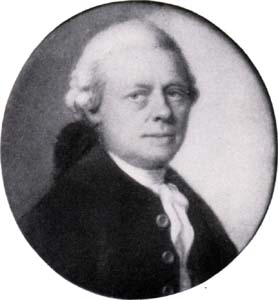
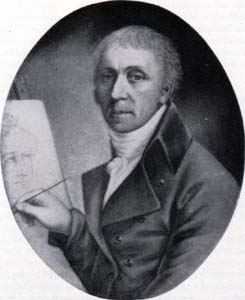
Pastel Self Portraits of Gottlob Friedrich Bach and his son Johann Philipp Bach
There are, of course, other possible explanations, and they are explanations that do not flat out contradict but rather clarify the
Meiningen Bach family tradition. Prof. Neumann hints at some of these when he presents Conrad Freyse's reasons for disqualifying
the Meiningen Pastel by:
"using an examination of style and technique to argue that it was a posthumous painting from about 1780 (contrary to
family tradition) and attributes it to the more famous Meiningen painter Johann Philipp Bach ..., who possibly executed
it from original sketches by his father or uncle." (Neumann, BDL, p. 404)
A side by side comparison of the Meiningen Pastel with the pastel portraits of Wilhem Friedemann and Carl Philipp Emanuel that
Gottlieb Friedrich is believed to have made on a visit to Leipzig around 1733, makes it clear that they are not contemporaneous;
Gottlob Friedrich's technique is awkward and unfinished, to say the least, in those pastels of his two cousins:
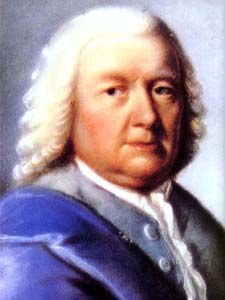

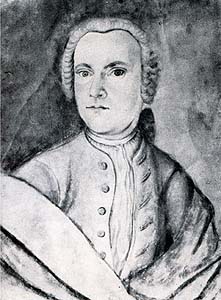
Meiningen Pastel; C. P. E. Bach; W. F. Bach
In fairness, it should be said that, while the pastel of C. P. E. is well preserved, the companion portrait of Friedemann is not, and
"has been impaired by restoration." (Neumann, BDL, p.427)
Of course, that does not rule out a portrait painted on a later visit, and that would seem to be much more likely in any event,
because the Bach of the Meiningen Pastel is certainly older than 48.
Yet another Gottlieb Friedrich pastel must also be taken into consideration, however. That is the pastel portrait that he made of his
father, Johann Ludwig, who died when his son was barely 17; this is also the pastel of Johann Ludwig Bach that is listed in the
inventory of C. P. E.'s estate.
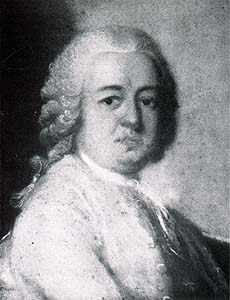
"[Johann Ludwig's] son Gottlieb Friedrich [cross references omitted] is regarded as the painter of this pastel..., but he
must have executed it in his earliest youth as it is an ad visum portrait." (Neumann, BDL, p. 424)
The dating of the pastel, obviously, is troublesome, particularly when it is placed beside the pastels of C. P. E., and Friedemann
that date from 1733.



Johann Ludwig Bach; C. P. E. Bach; W. F. Bach
All by Gottlieb Friedrich Bach
I guess it depends on how you define "ad visum". It is well within the realm of probability that both the Meiningen Pastel and the
"ad visum" Johann Ludwig Pastel are, in fact, just that, "life portraits", but that they are both portraits executed many years after the
initial sketches, which no longer survive, were made. A side by side comparison of the images shows many similarities of form, of
content, and of technique. They seem of close or equivalent date, and it is almost as though these images were part of a conscious
campaign to create accurate images at a time when the technical skills had become much more highly polished.


In short, there is no guarantee that either portrait dates from the lifetime of the sitter; in fact, in the case of the portrait of Johann
Ludwig, it can almost be guaranteed that it does NOT date from the lifetime of the sitter. What at least one of these remarkable
portraits most likely represents, therefore, is an extraordinary combination of reference sketches taken from life, a vivid memory,
and mature artistic technique.
For that reason alone, the Meiningen Pastel should not be and cannot be dismissed as unauthentic.
The contention, however, that the Meiningen Pastel is, in fact, a contemporaneous portrait from life should not be ruled out; in fact,
it is most likely the case. From the outset, Gottlieb Friedrich Bach was a painter first and a musician second. He received his official
appointment as Court Painter in Meiningen in 1745, and, clearly, his skills as an artist must have been fully mature by that point.
Comparisons with other examples of his work in the 1740s might help in dating the Meiningen Pastel more accurately.
But there are still other possibilities to be considered. As Arthur Mendel quite perceptively remarked:
"Philipp Emanuel did not state that the portrait was done by a member of the Bach family; yet he was writing to Forkel,
whom he knew to be eager for any scrap of information about the family." (Mendel '66, p. 424)
Let us consider the possibility that the Meiningen family tradition is garbled somewhat, but that, still, the Meiningen Pastel is a family
piece and still the work of a distinguished ancestor. Once again, I view it as well within the realm of probability that the pastel is, as
Freyse argues, the work of Johann Philipp, but I contend that it was done during his visit to his godfather in 1773. At that time,
Philipp Emanuel sat for his godson, and the result pleased C. P. E. very much. As he wrote of Gottlieb Friedrich and Johann
Philipp in his copy of the family genealogy:
"Both father and son are excellent portrait painters. The latter visited me last summer, and painted my portrait,
catching the likeness excellently" (Mendel, '66, p. 204)

Whether the original pastel of Johann Sebastian that Johann Philipp copied was the handiwork of his father or a portrait by another
pastellist, Johann Philipp, if he made the copy, made it while visiting his distinguished godfather. Since that copy and the likeness of
Carl Philipp Emauel would have been made practically simultaneously, how does Johann Philipp's pastel of Carl Philipp Emanuel
compare with the Meiningen Pastel and the pastel of Johann Ludwig Bach?



Another tough call. I may have graduated from Princeton with honors in art history, but that was 30 years ago. Nonetheless, despite
the remarkable similarity in style, my reaction is that the Meiningen Pastel and the documented portrait of Johann Ludwig are by the
same hand, which would indicate that the Meiningen Pastel is the work of Gottlieb Friedrich, not his son.
The hypothesis that Johann Philipp is responsible for the Meiningen Pastel, rather than his father, raises another intriguing issue. If
Johann Philipp made the copy while he was in Hamburg in 1773, why did he not copy the 1748 Haussmann or a detail from it? One
answer would support the contention that the original of the Meiningen Pastel, rather than a portrait by another artist, was, in fact,
the pastel that C. P. E. owned. Johann Philipp would have been likely to have wanted to copy his father's work more than that of an
artist who was personally unknown to him.
C. P. E.'s high praise for his Meiningen pastellist cousins, however, is worth giving serious consideration before rejecting the
Meiningen Pastel as an unauthentic representation of the face of Johann Sebastian Bach, whether a contemporaneous portrait from
life, a long after the fact "ad visum" work by Gottlieb Friedrich, or a skilled copy made by his son.
If, however, the arguably presently missing pastel portrait that once belonged to C. P. E. Bach was in fact the work of an otherwise
unknown artist and not the original of the Meiningen Pastel, could it also be the original source for the image derived from a painting
by one Gebel, that was made in 1798 by an uncredited engraver whom Hilgenfeldt later identified as the same Friedrich Wilhelm
Bollinger who made the first documented print of the 1746 Haussmann?

According to Prof. Neumann, "'Gebel pinx Leipzig' must refer to Emanuel Traugott Goebel (1751-1813),...who worked as a
portrait painter in Dresden and Leipzig, where there is evidence of his activity around 1780." (Neumann, BDL, p. 406) If that is in
fact the case, Gebel himself had to have worked from an otherwise unknown original. A comparison of the Meiningen Pastel with
the Gebel image as engraved by Bollinger reveals numerous similarities.

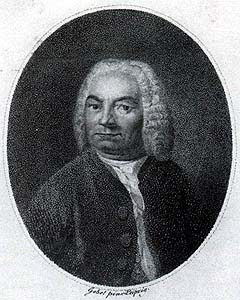
The similarities become even more apparent, when one "flops" the engraved image:

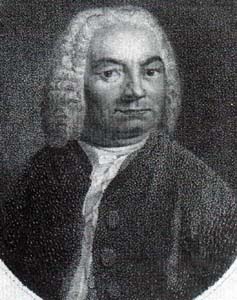
The discrepancies become easier to understand when one compares the equivalent detai from the 1746 Haussmann Portait with
Bollinger's engraved version.
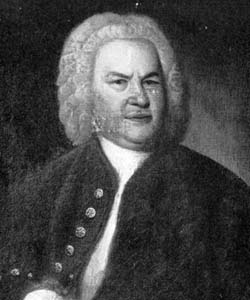
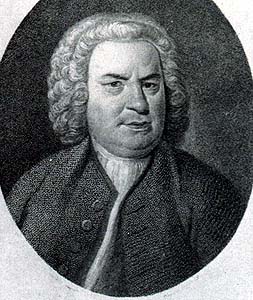
Still, as alluring as the similarities may be, the obvious differences are equally intriguing. The Gebel/Bollinger print may well be
derived from yet another image, perhaps the portrait that disappeared in 1812, to which Werner Neumann alludes in his discussion
of the portrait that belonged to Kittel.
"Attempts have been made to identify it with the disputed portrait of Bach in old age [the Volbach portrait], the
Haussmann replica of 1748, C. P. E. Bach's Haussmann portrait or an unknown portrait which vanished in about 1812."
Alas, yet again, I shall have to defer an investigation and a discussion, particularly since I now urgently need to locate a copy of the
now very scarce book or booklet in which Charles Sanford Terry announced the discovery of another pastel portrait of Johann
Sebastian Bach.
"It is far less likely that the large anonymous pastel (48 x 38.8 cm) reproduced with a commentary by Charles Sanford
Terry in 1936...can be regarded as C. P. E. Bach's 'nice, faithful original pastel'." (BDL, p. 397)
I have no recollection of ever having seen a reproduction of this image, and Neumann does not include a reproduction of it in BDL,
but the mere fact that it sank like a stone is not, to say the least, a good omen for its authenticity as a depiction of the face of Johann
Sebastian Bach.
But, as usual, I have gone far afield. Back to the Meiningen Pastel!
Those who reject the Meiningen Pastel reject it, I think, because it does not comport, perhaps subconsciously, with their long-held
preconceived notions of what the face of Johann Sebastian Bach should look like. (Another cogent proof of Sebastian's success in
assuring that the persona that he decided upon for the Haussmann portraits was the Johann Sebastian Bach that posterity would
visualize whenever his name was mentioned!)
For example, the renowned Bach scholar, Arthur Mendel, who was one of my teachers at Princeton, lo these many years, was an
arch-conservative when it came to the Bach iconography. In the Supplement to the Revised Edition of The Bach Reader (New
York, 1966), Prof. Mendel added an impassioned discussion of the various putative Bach portraits; he was particularly harsh on the
Meiningen Pastel:

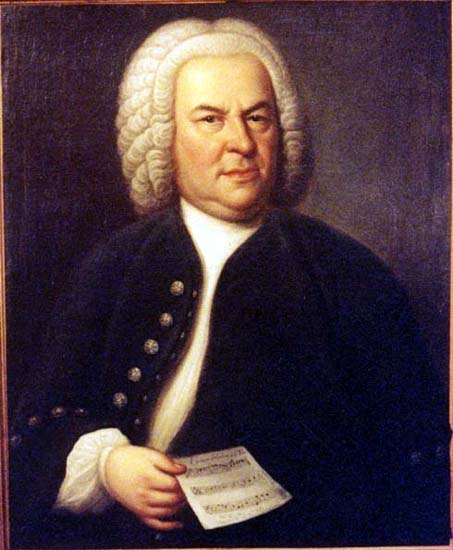
"Whether one sees in it any strong resemblance to the Bach of the Haussmann portraits is perhaps a personal
matter", Prof. Mendel wrote; "the editors do not." (Mendel '66, pp. 424)
The problem, of course, is exactly that: The Meiningen Pastel is not a portrait based on the Haussmann model and therefore, at least
initially, comes as something of a shock to those with the Haussmann portraits firmly embedded in their souls. The Meiningen
Pastel is almost a miniature, measuring about 6 inches wide by about 9 inches tall. It is the equivalent of a large snapshot in size.
But, despite the many attempts to discredit it and to cast doubt on the family tradition that accompanies it, the Meiningen Pastel has
the best shot at the one thing that neither of the Haussmann portraits has: a clear and arguably unbroken provenance.
And therein lies a rub: If provenance is the primary factor, the Meiningen Pastel becomes the standard, and the Haussmann portraits
become "also rans".
So, let's put the Meiningen Pastel to the test. Let us put the Meiningen Pastel through the same kind of comparison through which I
have so far put the Weydenhammer Portrait Fragment, the Volbach Portrait, the Berlin Portrait, the Group Portrait, and the Portrait
in Erfurt that is alleged to depict Bach, the Weimar Concertmeister. Using the 1748 Haussmann Portrait as the standard, let's see
how the Berlin Portrait measures up as an accurate depiction of Bach's physiognomical characteristics as they are agreed to be.
Please click on  to go on to Page 2.
to go on to Page 2.
Please click on  to return to the Index Page at The Face Of Bach.
to return to the Index Page at The Face Of Bach.
Please click on  to visit the Johann Sebastian Bach Index Page at Teri Noel Towe's Homepages.
to visit the Johann Sebastian Bach Index Page at Teri Noel Towe's Homepages.
Please click on the 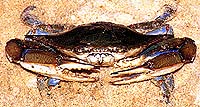 to visit the Teri Noel Towe Welcome Page.
to visit the Teri Noel Towe Welcome Page.
TheFaceOfBach@aol.com
Copyright, Teri Noel Towe, 2000 , 2002
Unless otherwise credited, all images of the Weydenhammer Portrait: Copyright, The Weydenhammer Descendants, 2000
All Rights Reserved
The Face Of Bach is a PPP Free Early Music website.

The Face Of Bach has received the HIP Woolly Mammoth Stamp of Approval from The HIP-ocrisy Home Page.